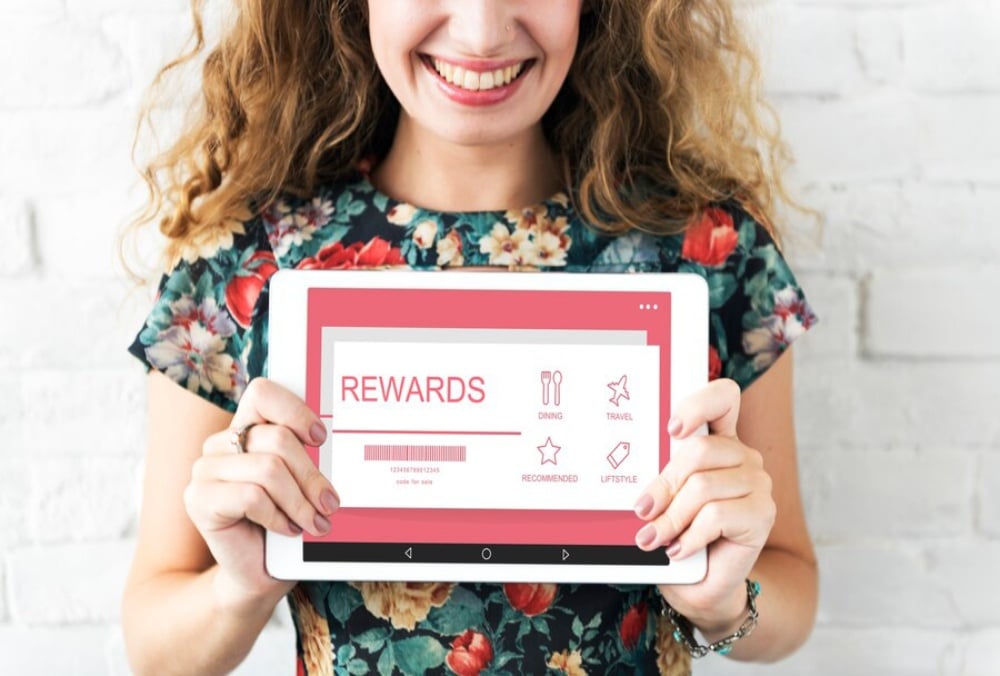
Personalised Customer Journeys in Modern Retail
Customer experience has become the key differentiator in the current competitive retail scenario. Modern retailers have to offer something beyond marketing usuals. They want to craft individual experiences for every shopper. In other words, it means thinking about what your customers want, what their tendencies are, and what they require. Personalisation is the key to this approach.
When done right, personalisation improves the customer journey. It makes the experience more relevant, engaging, and smooth. But personalisation is not a one-size-fits-all approach. Creating a meaningful shopping experience needs a clear understanding of customer data. It also requires knowing consumer behaviour well. Plus, you must integrate different digital tools for a complete approach.
In this blog post, we will discuss the landscape of modern retail and the concept of personalised customer journeys. We’ll look at its significance and how to properly implement it. We’ll also explore the new tools and strategies that are transforming the shopping experience. This guide helps retailers improve their strategy and marketers boost engagement. It offers ideas to enhance customer experiences.
Why Personalisation is Crucial in Modern Retail
Meeting Customer Expectations

Consumer expectations have changed thanks to the rise of digital platforms and the growing availability of data. Shoppers today want experiences that feel unique to them, tailored to their preferences. In fact, an Epsilon study found that 80% of consumers are more likely to make a purchase when brands offer personalised experiences.
Consumers now want more than product recommendations from their browsing history. They seek smooth, personalised experiences that connect across all touchpoints. This can include an online store suggesting products similar to past purchases. It can also mean a retail store remembering a customer’s name and offering personalised discounts when they enter.
The Competitive Advantage
In a crowded marketplace, differentiation is key to retaining customers. Personalised customer journeys do more than meet shoppers’ basic needs. They also build stronger connections. Retailers can boost customer satisfaction by providing tailored experiences. This helps build loyalty and drive sales.
Personalisation gives retailers an edge. It helps them understand and predict customer needs better. It helps businesses go beyond basic transactions. They can build strong connections that inspire trust and encourage customers to return.
Data-Driven Insights for Improved Personalisation
Personalisation relies heavily on data. Retailers now have a lot of consumer data. This includes past purchases, browsing habits, social media activity, and in-store visits. When used well, this data helps brands create relevant and personalised experiences.
Retailers can use customer data platforms (CDPs) and advanced analytics. This helps them understand individual preferences, habits, and behaviours. This data is the foundation upon which personalised journeys are built. The more information a retailer gathers and analyses, the better they can meet customer needs. This helps them provide tailored content, offers, and experiences.
Key Elements of Personalised Customer Journeys
Customer Data and Analytics
Data lies at the heart of personalisation. Retailers need to gather and study data from different files. This helps them offer a personalised experience to customers.
The data includes:
- Transaction data
- Browsing habits
- Location information
- Purchase history
- Survey feedback from customers
Analytics tools help retailers spot patterns and preferences in data. This way, they can make smart choices about the customer journey. Predictive analytics can help forecast what products a customer might buy next. It can also show when they are most open to marketing messages.
Segmentation and Targeting
While personalisation can often seem like one-on-one marketing, it typically begins with segmentation. Retailers can group customers by their similar behaviours, preferences, and demographics. This helps them create targeted campaigns that feel personal to each group.
Segmentation can be done in several ways:
- Demographic segmentation: Based on age, gender, income, etc.
- Geographic segmentation: Personalising based on location.
- Psychographic segmentation: Targeting based on lifestyle, values, and interests.
Next, we can use specific targeting strategies. This way, each customer gets content and offers that matter to them.
Omnichannel Consistency
A personalised journey is not confined to one platform or touchpoint. Customers today connect with brands in many ways: online, in-store, through mobile apps, and on social media. A seamless customer journey requires consistent and relevant messaging across all these touchpoints.
Omnichannel personalisation gives customers a smooth and customised experience, no matter where they engage with a brand. For example, if a customer gets a personalised email with product suggestions, they can log into the brand’s website or app. They should see those same suggestions while browsing.
Real-Time Engagement

Personalisation isn’t merely customising content based on previous interactions. It’s also about connecting with customers in real-time. In a real-time personalisation example, a customer visits an online store. They see personalised content or discounts just for them. It might show them a product they’ve looked at, or a discount to stimulate making the sale.
Real-time tools, such as chatbots and push notifications, improve shopping. They provide instant support, quick answers, and relevant offers. This type of engagement not only improves the customer experience but also increases conversion rates.
Tools and Technologies Behind Personalisation
Artificial Intelligence (AI) and Machine Learning
AI and machine learning play a significant role in driving personalisation efforts in retail. These technologies help retailers grasp consumer behaviour better. They can also predict future actions accurately. Machine learning algorithms can analyse large amounts of data. They suggest personalised content, product recommendations, and promotional offers. These suggestions are based on each customer’s preferences and buying habits.
AI-powered chatbots are also being used to enhance personalised customer interactions. These bots can answer questions and make product recommendations. They can also give personalised discounts. They learn from each customer interaction. This helps them provide better advice in the future.
Personalised Email Marketing
Email marketing continues to be one of the most effective ways to nurture customer relationships. Personalised email campaigns that use user behaviour, like browsing history or abandoned cart reminders, work really well.
Retailers can use data to craft personalised emails. These emails highlight relevant products and offers. AI-driven email marketing platforms can segment lists automatically. They track engagement and optimise content for each recipient.
Location-Based Personalisation
Location data helps personalise customer experiences, especially for physical retailers. Retailers can use geolocation technology to send personalised offers and discounts. This happens when customers are near or inside a store.
For example, when a customer walks into a mall, they may get a push notification. This notification could be about a limited-time deal on their favourite product at a nearby store. Location-based personalisation is a great way to increase foot traffic and sales.
Customer Loyalty Programs

Loyalty programs encourage repeat buying and help build strong customer ties. Retailers can boost customer loyalty by personalising rewards and offers. When they tailor these based on a customer’s preferences and past purchases, customers are more likely to return and engage often.
Personalised loyalty programs can offer discounts on items customers buy often. They can also provide exclusive access to products that interest them. The more personalised the loyalty program, the more likely customers are to feel valued and continue shopping with the brand.
Overcoming Challenges in Personalisation
While personalisation offers tremendous benefits, it also comes with its challenges. Let’s examine some common obstacles and how to overcome them.
Data Privacy Concerns
Retailers must manage customer data securely and responsibly because personalisation relies on it. With the increase in data breaches and worries about privacy, retailers need to be open about how they gather and use customers’ data.
Clear data privacy policies help build trust. Getting customer consent is key. Also, offering an easy opt-out option can ease privacy worries.
Balancing Automation with Human Touch
Automation tools, like chatbots and recommendation engines, are key for personalisation. But, it’s also important to keep human interaction balanced. Some customers like talking to a human, especially for tough problems or big purchases. Keeping personalised experiences human when needed builds stronger relationships and boosts customer loyalty.
Integration of Systems and Platforms
Retailers must connect their different platforms and systems to provide truly personalised experiences. A smooth integration of customer data is key for consistency. This applies to the online store, mobile app, and physical locations.
Many retailers face challenges integrating customer data from disparate systems. Investing in CRM tools and CDPs can centralise customer data. This makes it easier to provide personalised journeys across different channels.
Conclusion: Unlocking the Power of Personalised Customer Journeys
That is something a personalised experience in the retail world has played a huge role in in recent years. Online shopping is growing. Shoppers now want brands to provide personalised, smooth, and engaging experiences. Retailers who use customer data well will win the market. They will create personalised experiences.
Advanced technologies such as AI and machine learning can be harnessed by retailers. They allow, among other things, generating unique and meaningful customer journeys. Challenges exist, too — data privacy issues and the need to strike a balance between automation and human interaction.
As you start creating personalised customer experiences, focus on building strong connections. Anticipate their needs and provide value at every interaction.
Begin adding personalisation to your retail strategy today. Watch how it changes your customer relationships and boosts long-term success.
Want to stay ahead in the world of retail? Start personalising your customer journeys today and watch your business grow!


